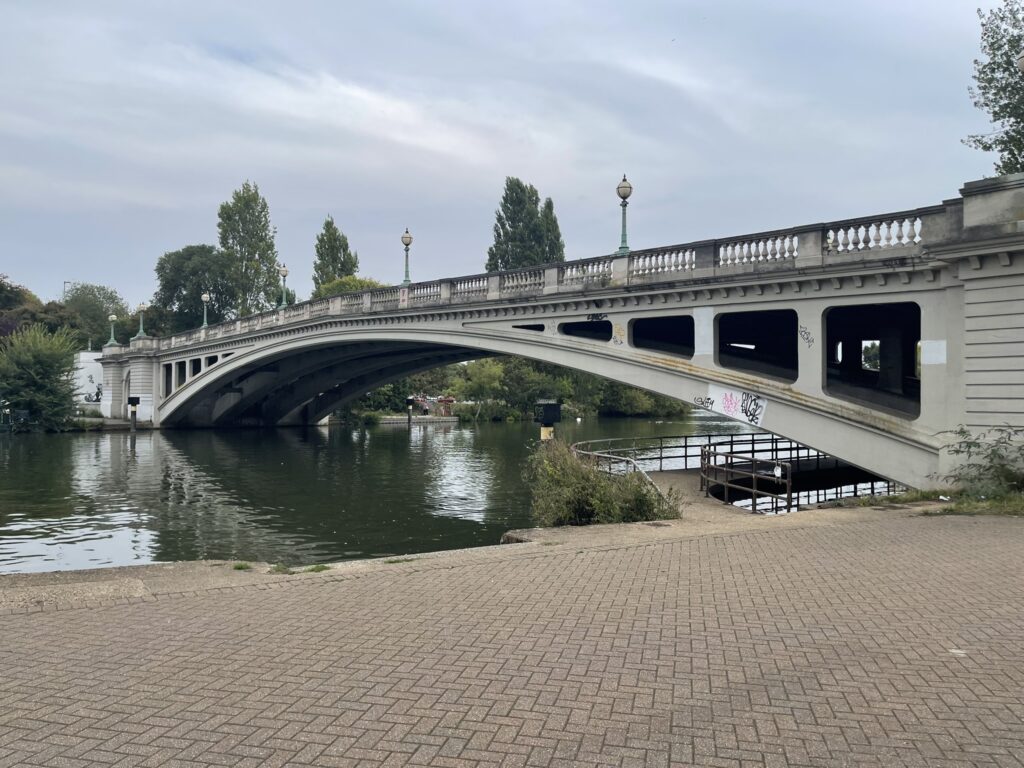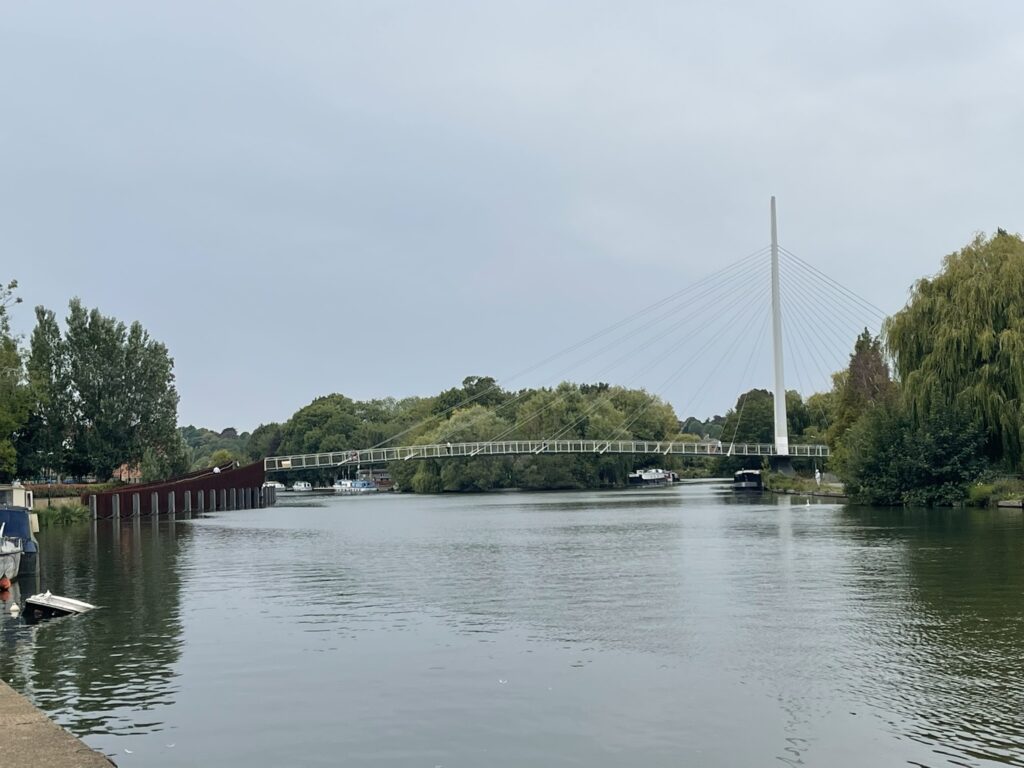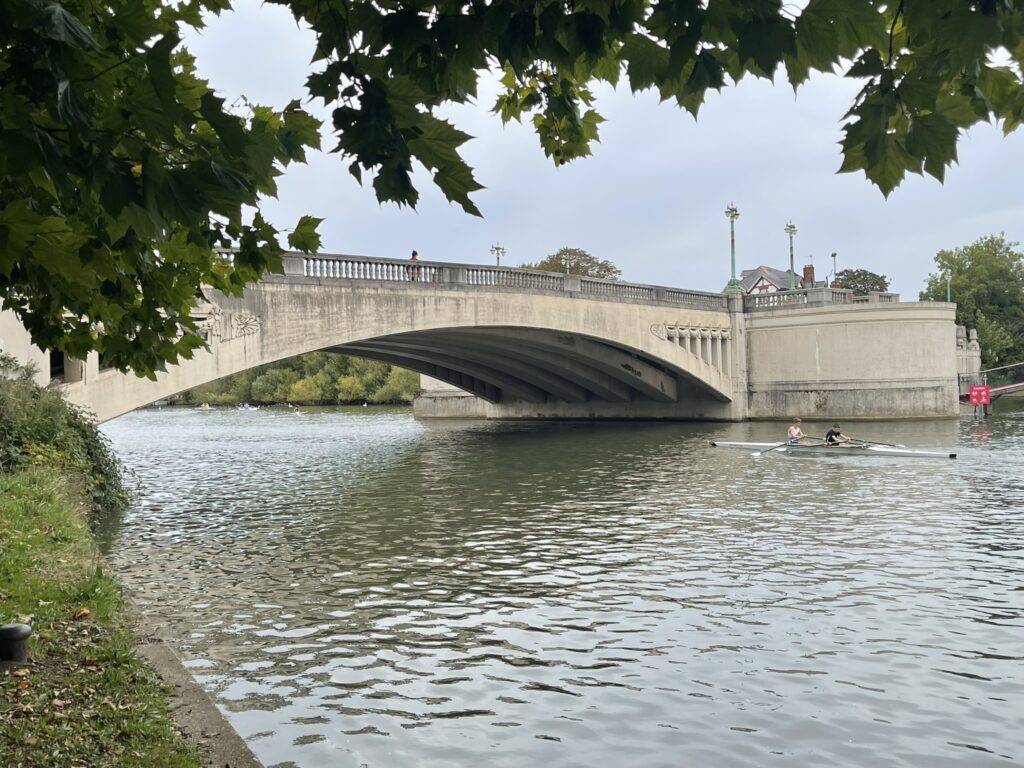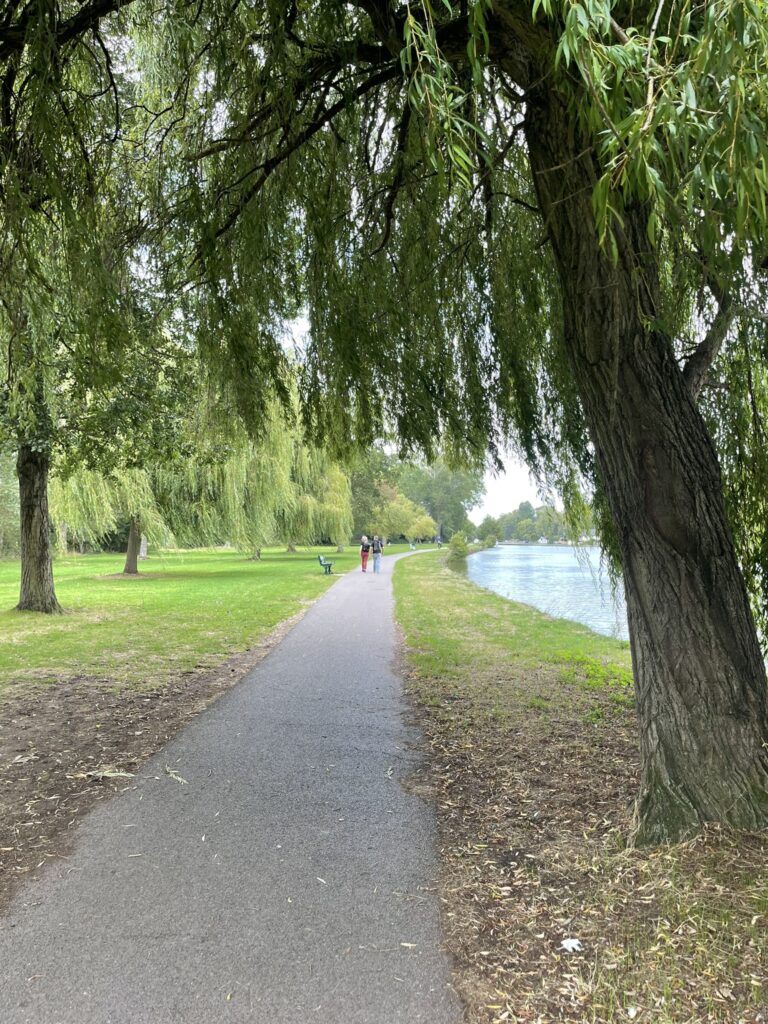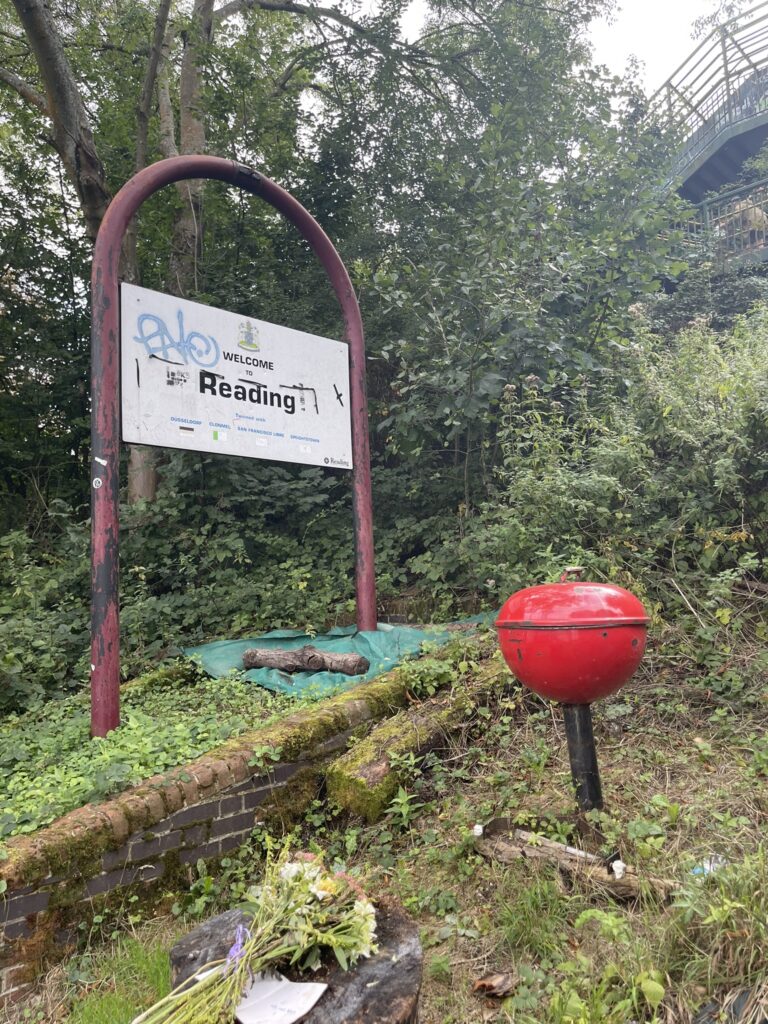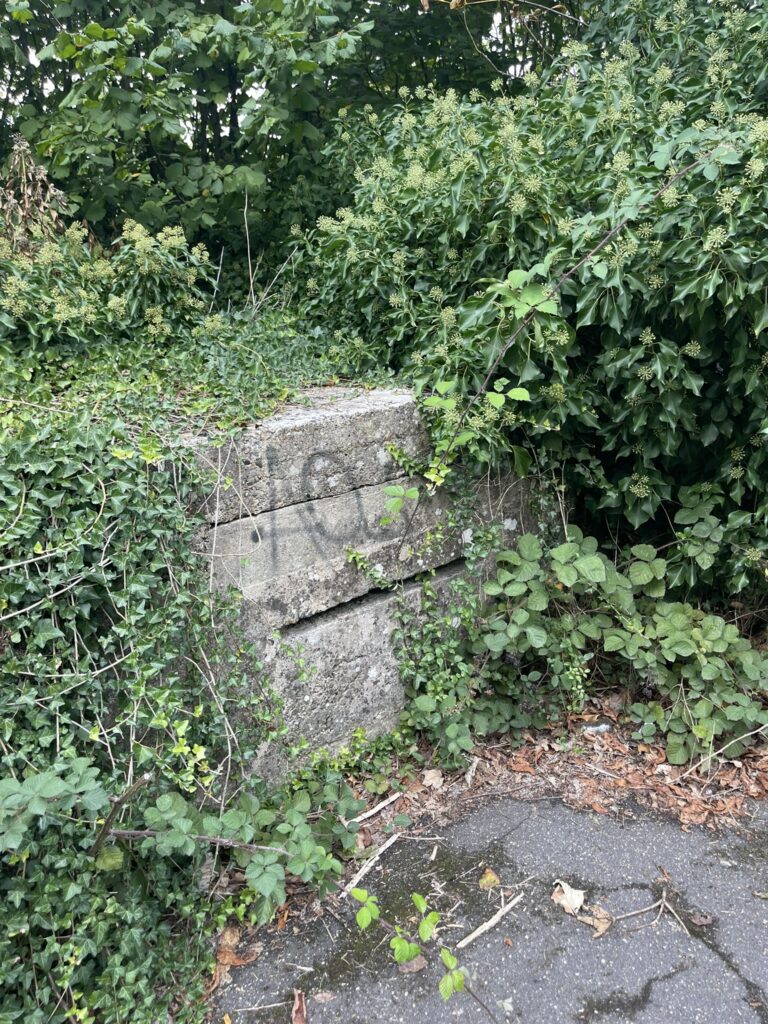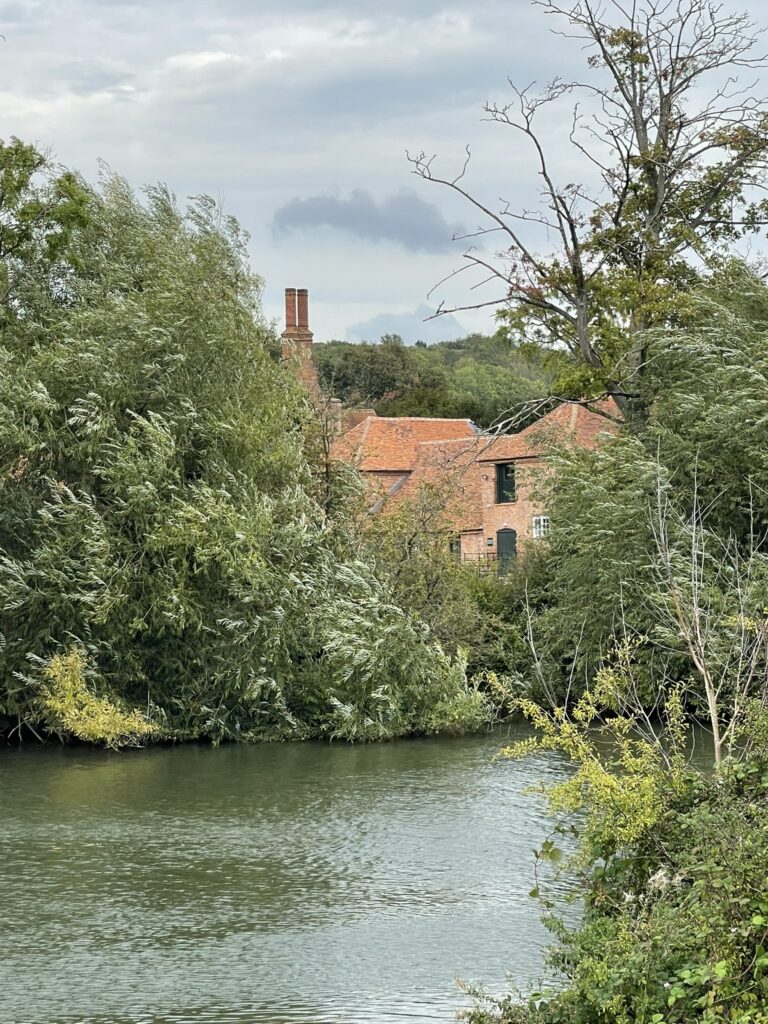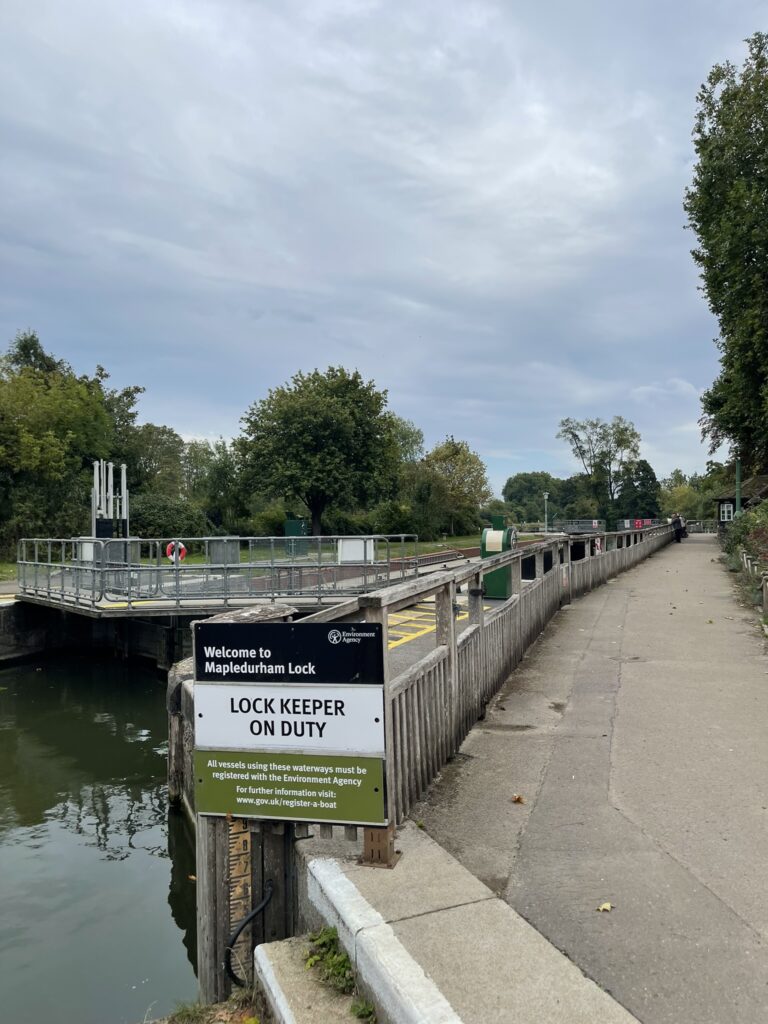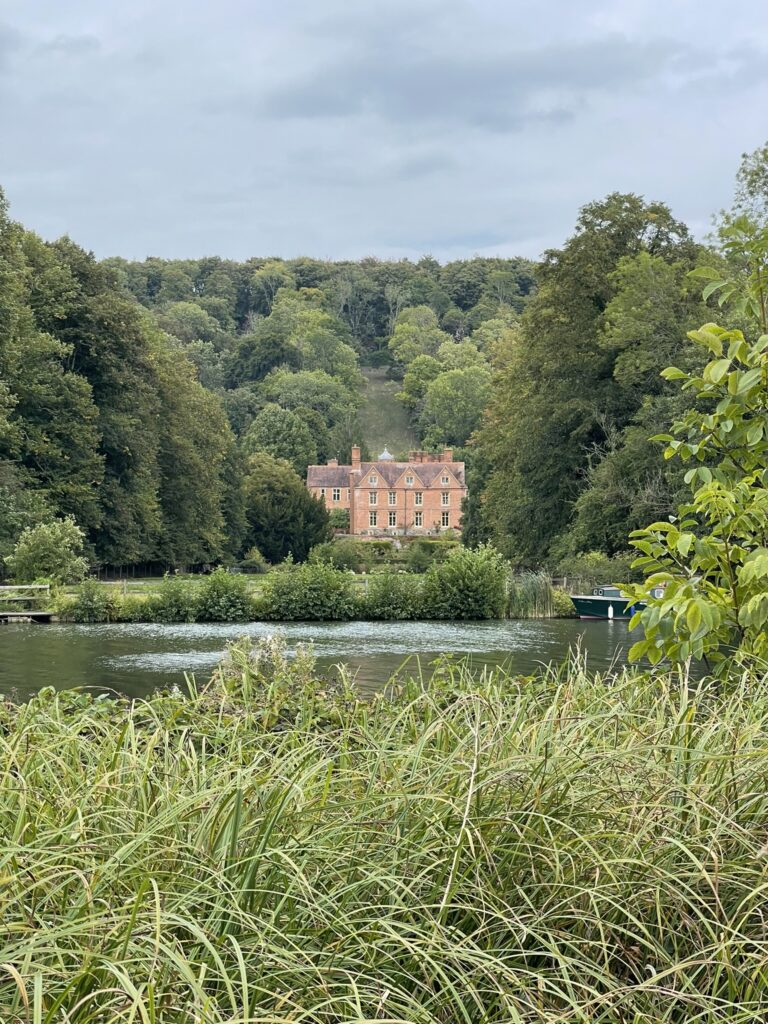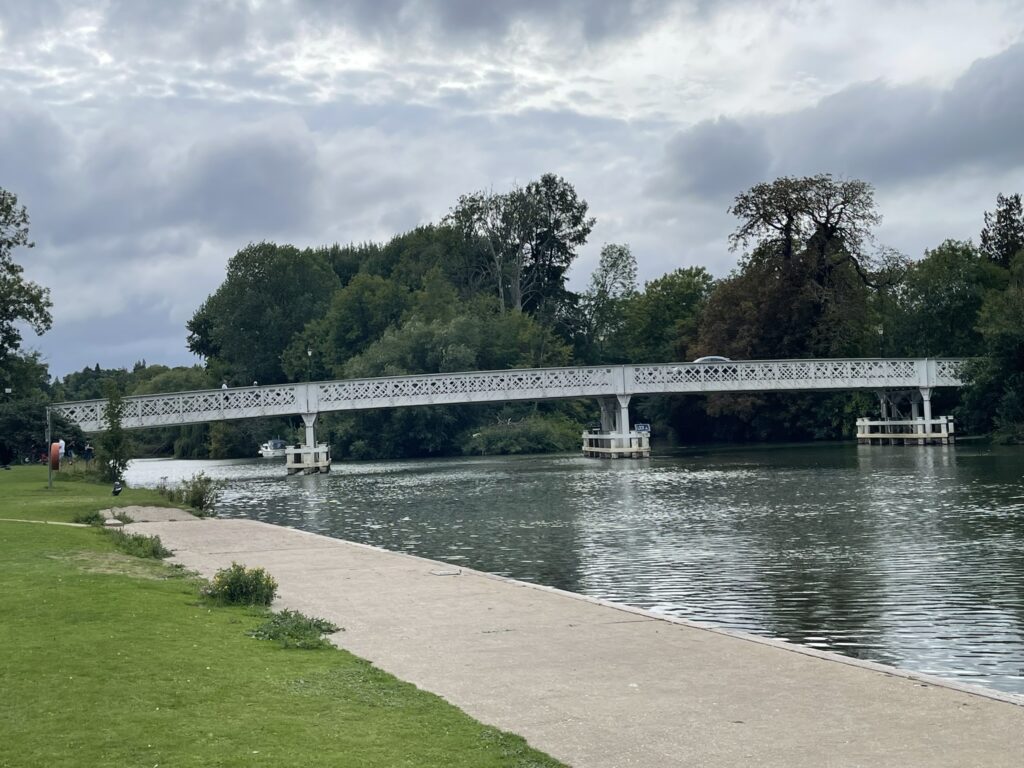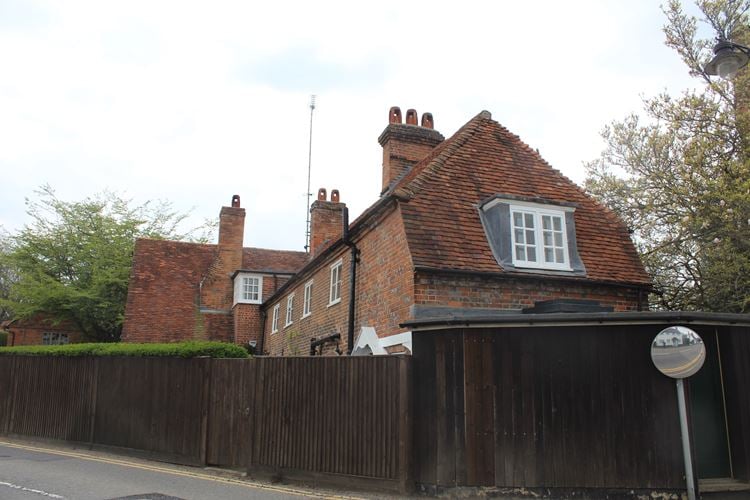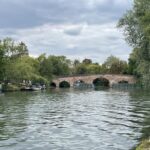Total Distance: 7.7 miles
Time: 3 hours 14 minutes
Points of Interest:
Reading Bridge
Christchurch bridge
Reading Abbey
Reading Gaol
Caversham Bridge
Rivermead park
Thames Side Promenade
Concrete Pillbox
Mapledurham House
Mapledurham Lock
Hardwick House
Pangbourne Meadow
Whitchurch Bridge
We arrived in Reading at around 13:15, a little later than planned, so decided to walk to Pangbourne rather than Goring and Streatley which we originally planned. From the train station, we headed to Reading bridge, our starting point today. The current bridge was opened on 3rd October 1923 and at the time had the longest single concrete reinforced span in the UK of 180 feet (55m).
Just 200 metres further along the path, is a newer bridge, Christchurch bridge. Built in 2015, this pedestrian and cycle bridge links Reading with Caversham. The cable-stayed bridge has a 68-metre-long (223 ft) river span, which is supported by 14 pairs of cables from a 39-metre-high (128 ft) mast that is asymmetrically placed on the north bank of the river.
If you fancy a slight detour, the Reading abbey ruins are nearby. The abbey was founded by Henry I in 1121 and then mostly destroyed in 1538 during Henry VIII’s dissolution of the monasteries. The earliest known English song ‘Sumer is icumen in’ was written in the cloisters of the abbey during the mid 13th century.
Summer has arrived,
Loudly sing, cuckoo!
The seed is growing
And the meadow is blooming,
And the wood is coming into leaf now,
Sing, cuckoo!– Modern English translation of the first verse of Sumer is icumen in
The abbey ruins are next to Reading Gaol which was closed in 2014 and in 2024 was sold to the non-profit Ziran Education Foundation. It’s most famous inmate was of course Oscar Wilde, who was incarcerated in the prison between 1895 and 1897 for ‘committing acts of gross indecency with other male persons’. His time at Reading Gaol was immortalised in his poem ‘The ballad of Reading Gaol’.
Reading’s Victorian-era prosperity stemmed from industrialization, particularly its “three Bs” of beer (Simonds Brewery), biscuits (Huntley & Palmers), and bulbs (Sutton’s Seeds). The arrival of the Great Western Railway in 1840 facilitated rapid growth by connecting the town to London and other major cities, acting as a significant transportation and economic hub. This transformation led to rapid urban expansion, new civic buildings like the Reading Town Hall, and cultural institutions, making it a bustling industrial centre by the late 19th century.
Continuing along the path, we reach Caversham Bridge. A bridge has stood here since approximately the 13th Century. The present concrete structure, featuring a granite balustrade, was inaugurated in 1926 by Edward, Prince of Wales.
Dodging cyclists, we entered Rivermead park and the Thames Side Promenade. There’s a large number of ducks and geese along here, so I kept Cher close by on her lead, I didn’t want her getting into a fight! The riverside walk through the park spans approximately 1.5 miles, offering numerous spots to rest and enjoy the river views.
The path then narrows and runs parallel to the railway track. We had to stop a few times to let cyclists past, but other than that, it’s a very peaceful part of the path. When we got to the ‘Welcome to Reading’ sign (complete with BBQ) we crossed over the railway via a footbridge and headed towards Purley-on-Thames.
We stumbled upon a concrete pillbox, almost hidden in the bushes, just after crossing the bridge and along Oxford Road. These hardened field defences were constructed during World War II. In May 1940, with the realization that the United Kingdom was vulnerable to invasion, approximately 28,000 pillboxes and other hardened field fortifications were built across Britain as part of anti-invasion preparations. Roughly 6,500 of these structures remain today.
The path then passed through some residential streets, where I got a bit lost, but soon got back on track. We made our way to the Mad Duck café where I picked up another stamp for my Walk the Thames passport, and a lemonade to have with my lunch. It started to rain a little, but that didn’t bother us too much, and we sat down by the river opposite Mapledurham House and had lunch.
Mapledurham House, a Grade I listed Elizabethan stately home, remains in the possession of the original family. It is widely believed to have inspired E. H. Shepard’s illustrations of Toad Hall in Kenneth Grahame’s The Wind in the Willows, though Hardwick House, also situated along the river, lays claim to the same distinction.
Not far from our lunch spot, Mapledurham Lock holds a significant place in history as the first mechanical lock on the River Thames, introduced in 1956. However, its success was short-lived, and it was converted back to hydraulic operation in 1974. The nearby 15th-century water mill, still in operation today, is powered by the weir. This mill, mentioned in the Domesday Book, holds the distinction of being the oldest working mill on the river.
We passed by the lock and entered an area of open countryside, bliss! Hardwick House is visible on the north side of the river. The House is also of Tudor design and was where Charles I frequently indulged in his favourite pastime of bowls. The house is now grade I listed and is a privately-owned estate managed by the family of Sir Charles Day Rose, the “Real Mr Toad”.
We then entered Pangbourne Meadow, which was acquired in 1936 through public subscription by the residents of Pangbourne. This was done to safeguard the meadow from development and guarantee that this vital part of the Thames riverside would remain accessible for everyone to enjoy.
Along the shore of silver streaming Thames,
Whose rutty bank, the which his river hems,
Was painted all with variable flowers,
And all the meads adorned with dainty gems,
Fit to deck maidens’ bowers,
And crown their paramours,
Against the bridal day, which is not long:
Sweet Thames, run softly, till I end my song.– Excerpt from Prothalamion by Edmund Spenser (1552—1599)
Our final destination for the day was Pangbourne, where we had about 30 minutes before our train departed for Paddington. We took a quick look around the village and discovered Church Cottage, the retirement home of Kenneth Grahame, author of The Wind in the Willows. After his death in 1932, local schoolchildren decorated the parish church with willows gathered from the river bank. His grave bears the inscription: “To the beautiful memory of Kenneth Grahame, husband of Elspeth, and father of Alastair, who passed the River on the 6th July 1932.”
After concluding our walk along the Thames Path for now, we plan to return in a couple of weeks to complete the journey to Oxford over three days. This will mark the end of this year’s walking. Having covered 53.5 miles this year (adding to the 40.5 miles from 2024), we are now over halfway and on track to complete the entire path in 2026!

